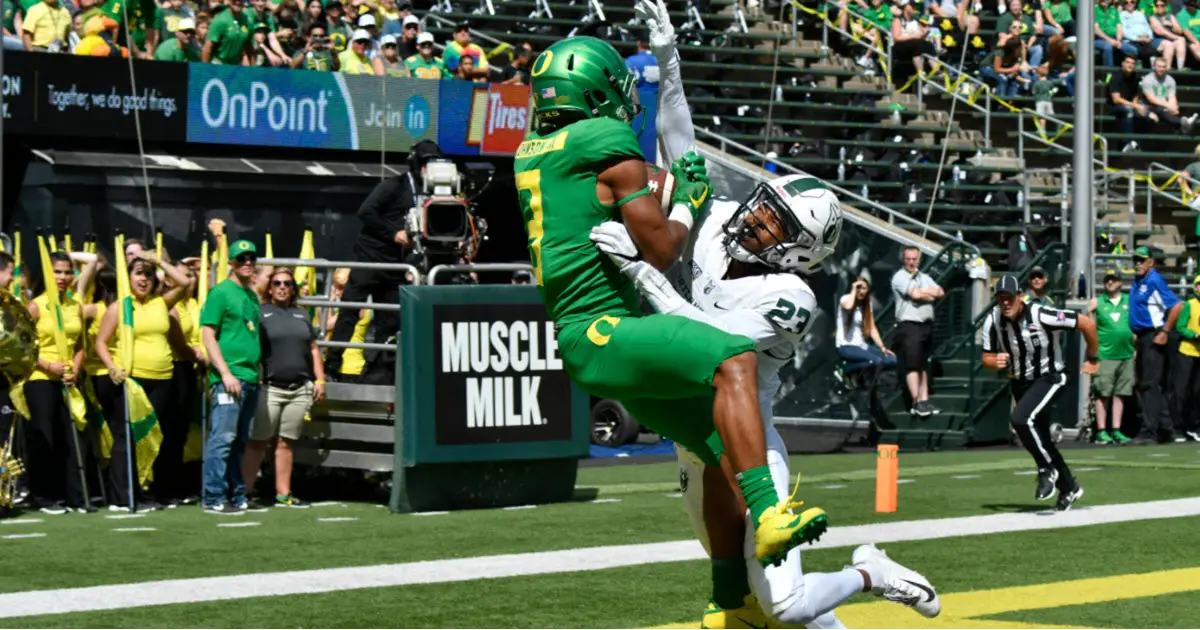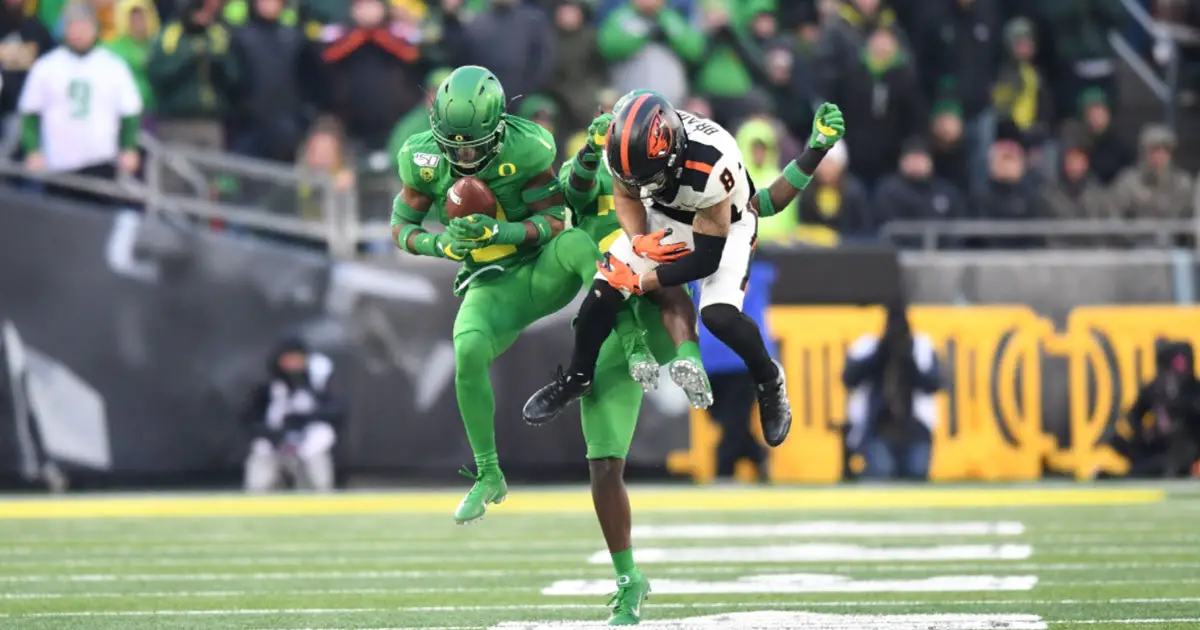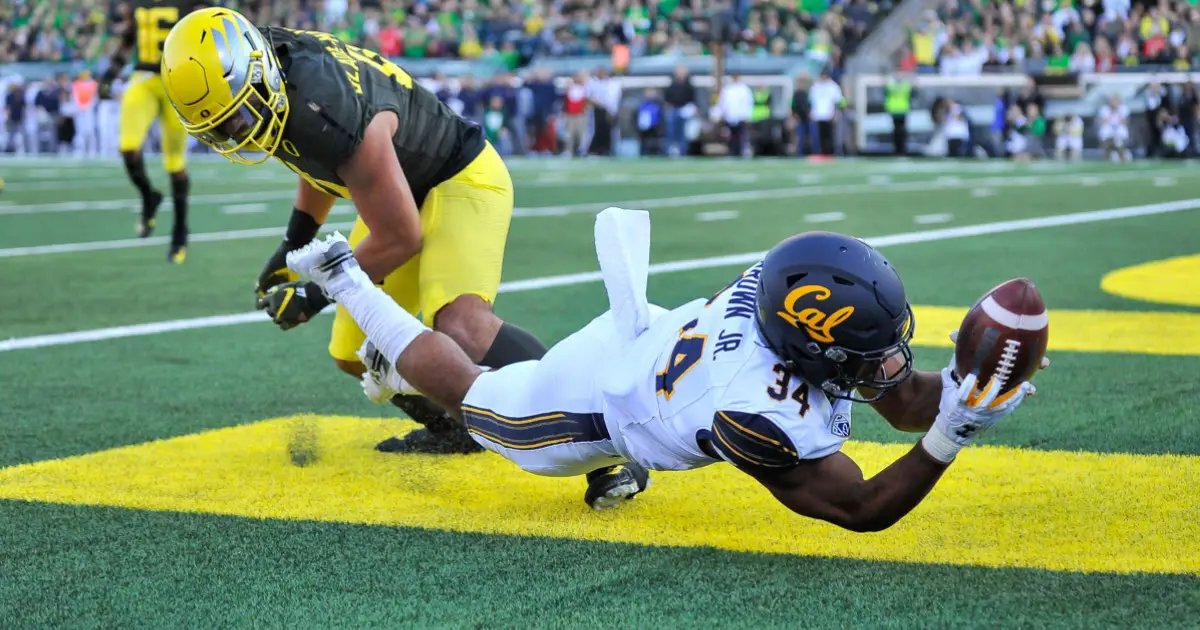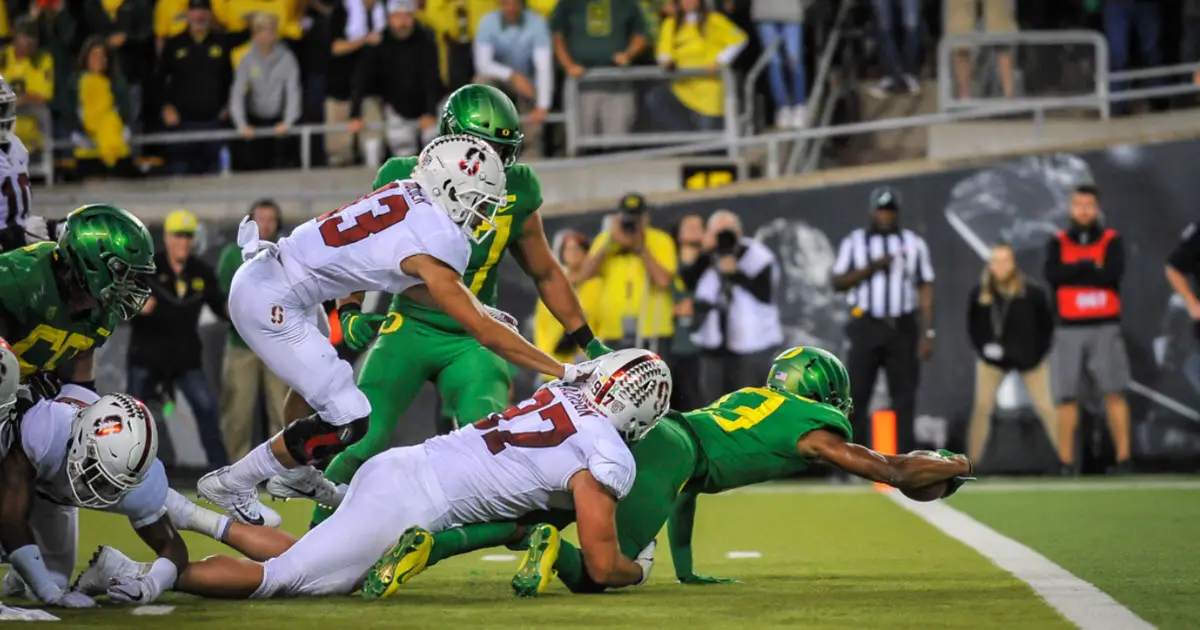First, the bad news: with every football season there is uncertainty. This season is already bad. Shadowed by COVID-19, which has the potential to cancel games, or the season in the worst case, the Pac-12 schedule has been shortened to seven games and doesn’t begin until November, closer to winter than autumn. Add to this Oregon coach Mario Cristobal‘s challenge in replacing last year’s quarterback, the entire offensive line, his best linebacker, and three quarters of the best secondary in the league, and you could see why he may not be sleeping well.
This season, Pac-12 guidelines state that a game can be cancelled if a team has fewer than 53 scholarship players available to participate, or the following minimum number of position scholarship players available to begin a game: seven (7) offensive linemen, one (1) quarterback and four (4) defensive linemen.
All players are to be tested daily, and if positive must be isolated until they post negative on successive days. False positives have already prevented Oregon’s scheduled second pre-season scrimmage, seriously limiting scarce game-like reps for a team with minimal experience.

No easy touchdowns against Portland State this year for Johnny Johnson III.
Due to the virus, the season is starting two months late and the schedule has eliminated the non-conference cupcakes usually played to pad win-loss records. Teams have also missed spring football practice (the Ducks had only four days out of 20 that were scheduled), so freshman players will be even more raw than usual for fall ball.
Because of all this, many natural advantages powerful Pac-12 teams have traditionally enjoyed have been leveled for all schools. Oregon’s opener with Stanford is likely not to be as polished as fans could normally anticipate. Quality coaching, always important, will be even more so this season.
Cristobal has sophomore quarterback Tyler Shough and Boston College transfer Anthony Brown to lead the offense, which also returns its top running backs and most of the receivers. But the heart and soul of a Cristobal offense is the line, and there is nary a returning starter to be had.
Fans won’t have to wait long to see whether the new group can step up to achieve the success the departed achieved, including the nation’s best lineman, Penei Sewell, who chose to leave with two years eligibility left to prepare for the pro draft.

The hapless Beaver receiver had his pocket “picked” by Mykael Wright, No. 2.
The front seven on defense, minus an all-league linebacker, is back, but the secondary is going to be young and vulnerable. The Ducks have a wealth of underage talent at all positions and one of the best defensive coordinators in the business, Andy Avalos, to take on opponents whose offensive personnel and capabilities are unknown, just like Oregon’s.
Today, track the explosion plays offensively and defensively of 10 yards or more, turnovers, and penalties — markers of young players needing game experience. Watch the big boys: linemen, hands on hips, sucking wind between plays as the game wears on. Players, with less training and practice time, will not be as well conditioned as usual, so it will be difficult to operate and defend fast-paced offenses. For openers, the Ducks could look a lot different than in the past years.
The good news is that Cristobal has a ton of talent to replace what was lost to graduation and the pros, and has Washington and Stanford at home. One question is how much of an advantage will Autzen Stadium provide if you can hear crickets in the background? As it is now, without the capacity crowd’s loud support, sharp-eared fans watching television at home can hear the quarterbacks’ signals and linemen’s calls at the line of scrimmage.

Cal has some talented players…
Cal would be my pick right now for the division title based on the Bears having the only established quarterback (undefeated in eight straight starts, and the active leader in starts (19) and wins (13) returning in the North), along with nine other offensive starters. The Bears get Oregon and Washington, two of their toughies, at home. However, without fans, traditional home-field advantages will not be as strong, which will hurt all teams equally this season.
The Cardinal is always tough for the Ducks, but they face the same problems all the other Pac-12 teams share: limited practice time this spring and fall, and less-than-usual knowledge of the potential of all their young players. On paper, Oregon has better players than Stanford and should win if Cristobal finds ways to overcome those challenges. Cardinal coach David Shaw has the most wins in Stanford football history and his teams are always hard-nosed on both sides of the ball. This makes for a game difficult to handicap.
Right now execution is more important than who the opponent is. Under the right circumstances, Oregon has the talent to win the North and the Pac-12 title. Now, though, the biggest hurdle might be one that no team, no matter how talented, can overcome — the dreaded COVID-19. With apologies to Hamlet, the season for all Pac-12 teams hangs in the balance, threatened by a host of unknown and unanticipated perils ahead, to be or not to be.
Coach Ken Woody
Eugene, Oregon
Top Photo by Kevin Cline
 Bob Rodes, the FishDuck.com Volunteer editor for this article, is an IT analyst, software developer and amateur classical pianist in Manchester, Tennessee.
Bob Rodes, the FishDuck.com Volunteer editor for this article, is an IT analyst, software developer and amateur classical pianist in Manchester, Tennessee.
WHAT THEY’RE SAYING ABOUT AFTER FURTHER REVIEW–AN INSIDE LOOK AT WHAT’S REALLY HAPPENING ON THE FOOTBALL FIELD
Mike Bellotti, ESPN Analyst and Former Oregon Head Coach: “Ken Woody’s ability to break down the game with interesting, entertaining insights comes from a career as a college player and coach, influenced by some of the top coaches in football. Woody spells it out in a simple, refreshing, humorous manner.”
Dan Fouts, NFL Hall of Fame, Oregon Ducks quarterback: “Entertaining and easy to understand.”
Ken Woody is a former Fox Sports football commentator who played defensive back, receiver and kicker for Oregon from 1966 to 1970. He coached college football for 18 years, including stints as an assistant coach at Oregon, Washington, Washington State and Utah State, and was head coach at Whitman College and Washington University-St. Louis.

Buy the book at the Oregon Bookstore, Michael’s Fine Books, at Amazon.com right here, and other bookstore outlets.
Related Articles:
Oregon Enters Playoffs Better Off Than Last Year
Will The Coaching Carousel Kill Oregon's CFP Chances?
The Playoff Formula Hasn't Changed
Oregon Aims to Bury Dawgs, Punch Playoff Ticket in Rivalry Clash
Huskies Are the New Beavers, Stay In Your Lane Kiffin, and the Civil Apple Cup War
Oregon Football: The X-Factor Vs. Washington
“I learned football working under many great coaches, among them Len Casanova, Jerry Frei, John Robinson, Bruce Snyder, George Seifert,and Ron Stratten at the University of Oregon, Jim Owens at the University of Washington and Jim Walden at Washington State University. Most of my coaching experience was on the offensive side of the ball with quarterbacks, receivers and kickers although as a head coach I coached defensive backs, linebackers and offensive line.
I achieved my first goal of being the youngest head coach in college football at the age of 26 and throughout my career in coaching and outside of it, as a journalist and broadcaster, have experienced how exciting and gratifying it is teaching the game to others.”

